3DWarehouse
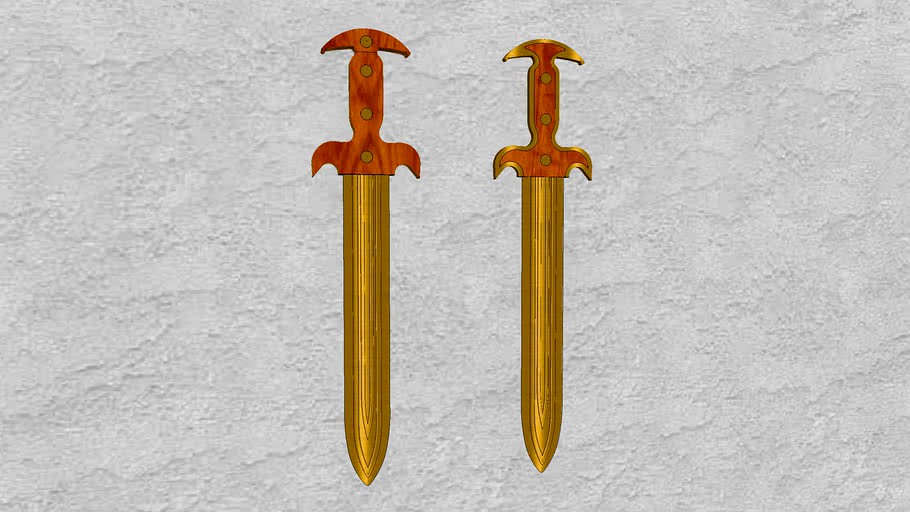
History of the Sword - Late Bronze Age (1,200 BCE) Mycenaean Flange Hilt Short Sword - Version 2
by 3DWarehouse
Last crawled date: 1 year, 6 months ago
In general, the evolution of blade weapons in the Bronze Age is from the dagger or knife in the Early Bronze Age to the earliest narrow bladed 'rapier' swords optimized for thrusting from the Middle Bronze Age to the typical broad-bladed slashing swords in the Late Bronze Age. During this time, one common advancement in sword making was the method of attaching the hilt to the blade. Early and Middle Bronze Age swords had their hilts attached to the blade by rivets, making them effective as thrusting weapons, but proving them ineffective as slashing weapons when the handle rivets tore through and separated from the blades. This situation was remedied during the Late Bronze age with the appearance of the 'flange hilted' sword where the sword hilt and blade were cast together in a single piece, incorporating raised flanges into the edges of the hilt in order to accept grips of wood or bone. This effectively eliminated the possibility of the sword tearing itself apart when used as a slashing weapon, and greatly increased the effectiveness of the sword in general. This model represents an example of a Mycenaean Type G 'flange hilted' broad bladed short sword which became popular around 1,400 BCE and remained in use until the end of the Mycenaean perond c 1100 BCE. The models show two styles of handle attachments. Overall length of swords = 17 1/8 inches. #bronze #bronze_age #flange_hilted #Greek #Greese #Mycanae #Mycanaean #sword #warrior #weapon
Similar models
3dwarehouse
free

History of the Sword - Late Bronze Age (1,200 BCE) Mycenaean Flange Hilt Swords
...hs of the swords are 26 3/4 inches. #bronze #bronze_age #flange_hilted #greek #greese #mycanae #mycanaean #sword #warrior #weapon
3dwarehouse
free

History of the Sword - Late Bronze Age (1,200 BCE) Mycenaean Flange Hilt Short Sword - Version 1
...erall length of swords = 17 inches. #bronze #bronze_age #flange_hilted #greek #greese #mycanae #mycanaean #sword #warrior #weapon
3dwarehouse
free

History of the Sword - Middle Bronze Age (1,400 BCE) Mycenaean Warrior Sword
...nt. bc. the overall sword length = 30 9/16 inches. #bronze #bronze_age #greek #greese #mycanae #mycanaean #sword #warrior #weapon
3dwarehouse
free

History of the Sword - Middle Bronze Age (1,500 BCE) - Minoan Rapier
...ation island of crete around 1,500 bce. overall length = 33 7/16 inches #bronze #bronze_age #crete #minoan #rapier #sword #weapon
3dwarehouse
free

History of the Sword - Middle Bronze Age (1,300 BCE) - British Rapier
...british isles around 1,300 bce. overall length = 20 3/8 inches #british_isles #bronze #bronze_age #england #rapier #sword #weapon
3dwarehouse
free

History of the Sword - Middle Bronze Age (1,500 - 1,300 BCE) - Irish Lissane Rapier
...sword of its' type, with a blade length of 30 1/4 inches. #bronze #bronze_age #ireland #irish #lissane #rapier #sword #weapon
3dwarehouse
free

History of the Sword - Late Bronze Age (800-700 BCE) - British Ewart-ParK Sword
...67cm). #british_isles #bronze #bronze_age #england #ewart_park #founders_hoard #hoard #leaf_blade #slash #slashing #sword #weapon
3dwarehouse
free

History of the Sword - Mid Bronze Age Penard Phase (1,200-1000 BCE) - Irish Ballintober Sword
...tish_isles #bronze #bronze_age #england #founders_hoard #hoard #ireland #leaf_blade #panard_phase #slash #slashing #sword #weapon
cg_trader
$8

CURVED SWORD
...ge on one or both sides of the blade, and are more likely to be curved. many swords are designed for both thrusting and slashing.
3dwarehouse
free

History of the Sword - Early Bronze Age (3300 – 3000 BCE) - The First Swords at Arslantepe
...re all drawn to scale. #anatolia #archaeology #arslantepe #bronze #bronze_age #copper #copper_age #history #sword #turkey #weapon
Mycenaean
turbosquid
$180

Greek Mycenaean Fortress A
... available on turbo squid, the world's leading provider of digital 3d models for visualization, films, television, and games.
turbosquid
$30

Saddle Greek Mycenaean Bridle Harness
... available on turbo squid, the world's leading provider of digital 3d models for visualization, films, television, and games.
cg_studio
$20

Saddle Greek Mycenaean Bridle Harness3d model
....c4d .obj .vue - saddle greek mycenaean bridle harness 3d model, royalty free license available, instant download after purchase.
turbosquid
$45

Props Set Poser Daz for Greek Mycenaean Horseman
... available on turbo squid, the world's leading provider of digital 3d models for visualization, films, television, and games.
turbosquid
$45

Props Set Poser Daz for Archer Slinger Greek Mycenaean
... available on turbo squid, the world's leading provider of digital 3d models for visualization, films, television, and games.
turbosquid
$38

Props Set Poser Daz for Ancient Greek Mycenaean Swordsman
... available on turbo squid, the world's leading provider of digital 3d models for visualization, films, television, and games.
3d_export
$98

greek mycenaean spearman b props poser daz
...eries is developing high-fidelity 3d reconstruction of objects, architecture and scenes from classical greek and roman antiquity.
3d_export
$225

greek homeric odysseus ship
...latin] during his incredible voyages. useful also for any mycenaean use. 79 hd textures, uvmap and alternate textures. real...
3d_export
$75

ancient greek hero perseus
...the famous town of mycenae, after which the greek mycenaean civilization is named. among his legendary deeds, perseus killed...
thingiverse
free

Mycenaean Sword
...mycenaean sword
thingiverse
a model of a type f sword from mycenaean greece.
Bce
3d_export
$100

the persian column
...with the invasion by alexander the great in 330 bce when persepolis was burned...
3d_export
$50
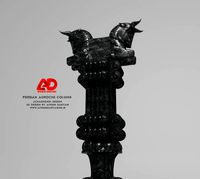
Persian columnachaemenid
...with the invasion by alexander the great in 330 bce when persepolis was burned...
3dfindit
free

BCE
...bce
3dfind.it
catalog: a&t
3dfindit
free

BCE
...bce
3dfind.it
catalog: a&t
3dfindit
free

BCE
...bce
3dfind.it
catalog: a&t
3dfindit
free

BCE
...bce
3dfind.it
catalog: a&t profile
thingiverse
free

4th C BCE Kneeling Figure by artsmia
...ab.
no scale set in this stl; the real thing is about 11 inches (29cm) tall.
full-color object on sketchfab: https://skfb.ly/zhpf
thingiverse
free

5th C BCE Chinese Tiger by artsmia
...ollections.artsmia.org/art/1035/tiger-china
the object on sketchfab:https://sketchfab.com/models/8fe05f974a004d348d75ef76e045946b
thingiverse
free

4th C BCE Torch Bearer by artsmia
...te of arts:https://collections.artsmia.org/index.php?page=detail&id=825
scanned with 123d catch, cleaned up in netfabb basic.
thingiverse
free

Osiris, 644-30 BCE by artsmia
...ia.org:https://collections.artsmia.org/art/93/god-osiris-ancient-egyptian
here's the model on sketchfab:https://skfb.ly/6bthy
Hilt
turbosquid
$7

Saber Hilt
...ree 3d model saber hilt for download as ma, obj, fbx, and dae on turbosquid: 3d models for games, architecture, videos. (1314823)
turbosquid
$1

Sword handle (hilt)
...royalty free 3d model sword handle (hilt) for download as stl on turbosquid: 3d models for games, architecture, videos. (1326295)
turbosquid
$1

Green Lightsaber Hilt
... available on turbo squid, the world's leading provider of digital 3d models for visualization, films, television, and games.
turbosquid
free

Sword with Gold Hilt
... available on turbo squid, the world's leading provider of digital 3d models for visualization, films, television, and games.
3d_export
$20

Basket Hilt Broadsword 3D Model
...model
3dexport
basket hilt broadsword sword scottish claymore highlander
basket hilt broadsword 3d model khan raider 967 3dexport
turbosquid
$19

Basket-Hilt Sword Lowpoly
... available on turbo squid, the world's leading provider of digital 3d models for visualization, films, television, and games.
turbosquid
free

Two Swept Hilt Rapiers.max
... available on turbo squid, the world's leading provider of digital 3d models for visualization, films, television, and games.
3d_export
$60

Grand Saber Hilt Pack 3D Model
...echnology future past advanced fight duel combat battle jedi sith sabre cut
grand saber hilt pack 3d model essence 17895 3dexport
3d_export
$5

iron sword with a golden hilt
...e used in computer games or in 3d animation<br>my youtube channel: https://www.youtube.com/channel/ucjiadkwmpcpdcbuhvwicpwg
3d_export
free

sword
...sword 3dexport gold-hiltd sword, sharpened...
Late
3ddd
$1
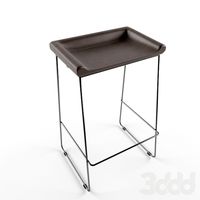
Late
... барный
барный стул отсюдаhttp://www.danish-store.ru/collections/chairs/products/late?variant=890643065
turbosquid
$400

Late Triassic Earth
... available on turbo squid, the world's leading provider of digital 3d models for visualization, films, television, and games.
turbosquid
$400

Late Ordovician Earth
... available on turbo squid, the world's leading provider of digital 3d models for visualization, films, television, and games.
turbosquid
free

Late Model Wings
... available on turbo squid, the world's leading provider of digital 3d models for visualization, films, television, and games.
3d_ocean
$9

Clear Late Afternoon
...d a vertical cross version. spherical map has a resolution: 5000×2500 px. light probe resolution: 3000×3000 px vertical cross ...
cg_studio
$99

Tiger - Late Production3d model
...gstudio
.lwo .c4d .3ds .obj - tiger - late production 3d model, royalty free license available, instant download after purchase.
turbosquid
$99

iMac Late 2012 Station
... available on turbo squid, the world's leading provider of digital 3d models for visualization, films, television, and games.
turbosquid
$3

late hours dress 03
... available on turbo squid, the world's leading provider of digital 3d models for visualization, films, television, and games.
turbosquid
$3

late hours dress 02
... available on turbo squid, the world's leading provider of digital 3d models for visualization, films, television, and games.
turbosquid
$39

Knight's Bastard Sword, Late Medieval PBR
... available on turbo squid, the world's leading provider of digital 3d models for visualization, films, television, and games.
Flange
turbosquid
$15

flange
...urbosquid
royalty free 3d model flange for download as sldas on turbosquid: 3d models for games, architecture, videos. (1341096)
3d_export
$5

Flanged mace
...flanged mace
3dexport
flanged mace after battle
turbosquid
$10

Flange
... available on turbo squid, the world's leading provider of digital 3d models for visualization, films, television, and games.
turbosquid
$10

Flange
... available on turbo squid, the world's leading provider of digital 3d models for visualization, films, television, and games.
turbosquid
$3

Flange
... available on turbo squid, the world's leading provider of digital 3d models for visualization, films, television, and games.
turbosquid
$3

Flange
... available on turbo squid, the world's leading provider of digital 3d models for visualization, films, television, and games.
turbosquid
$3

Turlet flange
...quid
royalty free 3d model turlet flange for download as stl on turbosquid: 3d models for games, architecture, videos. (1371282)
turbosquid
$40

Flanged Mace
... free 3d model flanged mace for download as 3ds, max, and obj on turbosquid: 3d models for games, architecture, videos. (1301562)
turbosquid
$1

Flanged Mace
...d model flanged mace for download as 3ds, obj, fbx, and blend on turbosquid: 3d models for games, architecture, videos. (1264668)
turbosquid
$17

Flat flange
... available on turbo squid, the world's leading provider of digital 3d models for visualization, films, television, and games.
History
turbosquid
$50

History Church
...alty free 3d model history church for download as max and fbx on turbosquid: 3d models for games, architecture, videos. (1284367)
turbosquid
$50

History Old Building
... model history old building for download as jpg, max, and fbx on turbosquid: 3d models for games, architecture, videos. (1276133)
turbosquid
$50

History old building
...l history old building for download as jpg, tif, max, and fbx on turbosquid: 3d models for games, architecture, videos. (1273146)
turbosquid
$5

Islamic Architecture History
... available on turbo squid, the world's leading provider of digital 3d models for visualization, films, television, and games.
turbosquid
$12

Dishes old history n2
...yalty free 3d model dishes old history n2 for download as max on turbosquid: 3d models for games, architecture, videos. (1575409)
3d_export
$18

history-historic site-tianlufang 12
...history-historic site-tianlufang 12
3dexport
history-historic site-tianlufang 12<br>3ds max 2015
3d_export
$18

history-historic site-tianlufang 13
...history-historic site-tianlufang 13
3dexport
history-historic site-tianlufang 13<br>3ds max 2015
3ddd
$1

Шкаф "History"
...рованс.http://lifemebel.ru/catalog/mebel_dlya_spalni/shkafy_tumby_komody/shkafy/model/stellazh_pearl_style_kfh10034_eg/
turbosquid
$73

Yacht Baia 100 History Supreme
... available on turbo squid, the world's leading provider of digital 3d models for visualization, films, television, and games.
3d_export
$18

ancient-history-book-bamboo slip 01
...1
3dexport
ancient-history-book-bamboo slip 01<br>max 2015 v-ray 3 max 2015<br>textures<br>all files in zip...
Bronze
3ddd
$1

Namuh bronze
...namuh bronze
3ddd
namuh bronce
namuh bronze
3ddd
$1

Swans in Bronze
...swans in bronze
3ddd
лебедь , статуэтка
swans in bronze
with 3d max 2014 and vray 3.0
design_connected
$16

Bronze Chaise
...bronze chaise
designconnected
brown jordan bronze chaise computer generated 3d model. designed by lamb, walter.
3ddd
$1

779088 Bronze Osgona
... osgona , lightstar
779088 bronze osgonahttp://www.lightstar.ru/
3ddd
$1

779218 Bronze Osgona
... osgona , lightstar
779218 bronze osgonahttp://www.lightstar.ru/
3ddd
$1

779318 Bronze Osgona
... osgona , lightstar
779318 bronze osgonahttp://www.lightstar.ru/
3ddd
free

779628 Bronze Osgona
... osgona , lightstar
779628 bronze osgonahttp://www.lightstar.ru/
3ddd
$1

Griffin / Palladian Bronze
...in , palladian bronze
коллекция griffin, модель palladian bronze. моделил по фотографии.
turbosquid
$20

MACE BRONZE
...osquid
royalty free 3d model mace bronze for download as max on turbosquid: 3d models for games, architecture, videos. (1660519)
turbosquid
$10

maytoni bronze
...uid
royalty free 3d model maytoni bronze for download as max on turbosquid: 3d models for games, architecture, videos. (1375073)
Age
3d_export
$245

aging man
...aging man
3dexport
high detailed aging man.<br>poses:<br>aging sequence:<br>faces / verts
3d_export
$30

Aged To Perfection 50 Age Cake
...so order real cake from this link: https://cakesburg.co.uk/products/age-to-perfection-50-cake?_pos=1&_sid=a15854854&_ss=r
3ddd
$1

Aged Pixel.Роter.
... постер
колекция постеров. автор работ aged pixel.http://fineartamerica.com/profiles/agedpixel.html
turbosquid
$10

Aged Chiar
...bosquid
royalty free 3d model aged chiar for download as obj on turbosquid: 3d models for games, architecture, videos. (1358073)
vizpark
$50

Aged Walls
... highly detailed old brick multitextures for architectural visualization, with bump, displacement, reflection and diffuse layers.
turbosquid
$60

Aged vase
...lty free 3d model aged vase for download as max, obj, and fbx on turbosquid: 3d models for games, architecture, videos. (1268812)
3ddd
free

Aran / AGE-LOW
...aran / age-low
3ddd
aran
фабрика aran, коллекция age-low
turbosquid
$49

Aged Couch
... 3d model aged couch for download as blend, dae, fbx, and obj on turbosquid: 3d models for games, architecture, videos. (1527087)
3ddd
$1

NEW AGE Linen Chair
...new age linen chair
3ddd
new age
кресло new age linen chair от curations limited
3ddd
$1

Aged Pixel.Brand Names - Grass
...ddd
aged pixel , картины
колекция постеров.brand names - grass автор работ aged pixel.
Sword
3d_ocean
$3

sword
...sword
3docean
sword
a high quality sword .
3d_export
$5

sword
...sword
3dexport
a sword made in a blender, a quality sword
3d_export
$35

Sword
...sword
3dexport
sword
3d_export
$10

sword
...sword
3dexport
sword
3d_export
$6

sword
...sword
3dexport
sword
3d_export
$5

sword
...sword
3dexport
sword
3d_export
$5

sword
...sword
3dexport
sword
3d_export
$5

Sword
...sword
3dexport
sword
3d_export
$5

sword
...sword
3dexport
sword
3d_export
$5

sword
...sword
3dexport
sword
200
design_connected
$27

Lifewood 200
...lifewood 200
designconnected
flexform lifewood 200 computer generated 3d model.
design_connected
$27

Nonnamaria 200
...nonnamaria 200
designconnected
flexform nonnamaria 200 computer generated 3d model.
design_connected
free

XZ3 200
...xz3 200
designconnected
free 3d model of xz3 200 by magis designed by van onck, andries & hiroko.
3d_export
$17

Boeing 717-200
...boeing 717-200
3dexport
boeing 717-200
3ddd
free

Possoni /200 / 25
...possoni /200 / 25
3ddd
possoni
possoni/200/25
turbosquid
$10

Set-200
...yalty free 3d model set-200 for download as max, obj, and fbx on turbosquid: 3d models for games, architecture, videos. (1296305)
3ddd
$1

LG TS-200
...lg ts-200
3ddd
dvd , lg , пульт
lg ts-200
turbosquid
$5

Chair 200
...d model chair 200 for download as max, max, 3ds, fbx, and obj on turbosquid: 3d models for games, architecture, videos. (1647835)
turbosquid
$5

Chair 200
...d model chair 200 for download as max, max, 3ds, fbx, and obj on turbosquid: 3d models for games, architecture, videos. (1648696)
turbosquid
$3

200 Euro
... available on turbo squid, the world's leading provider of digital 3d models for visualization, films, television, and games.
Short
3d_ocean
$3

Shorts
...shorts
3docean
3d models clothes & accessories shorts
3d models, clothes & accessories, shorts
turbosquid
free

shorts
...shorts
turbosquid
free 3d model shorts for download as blend on turbosquid: 3d models for games, architecture, videos. (1433959)
3d_export
$5

short foot
...short foot
3dexport
short foot
turbosquid
$15

short
...royalty free 3d model short for download as max, max, and pac on turbosquid: 3d models for games, architecture, videos. (1568324)
turbosquid
$9

Shorts
... available on turbo squid, the world's leading provider of digital 3d models for visualization, films, television, and games.
3d_export
$5

pant short
...pant short
3dexport
pant short for cc 3
3d_ocean
$2
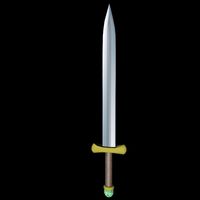
Short sword
...sy fentezi for games podhodit short style textured
short blade, textured style fentezi.podhodit for fantasy animations and games!
3d_export
$5
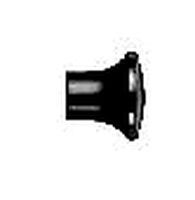
short simple knob
...short simple knob
3dexport
short simple knob
3d_export
$5
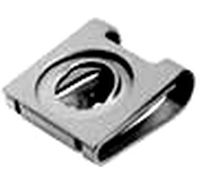
short screw clip
...short screw clip
3dexport
short screw clip
turbosquid
$2

Short Table
...urbosquid
royalty free 3d model short table for download as on turbosquid: 3d models for games, architecture, videos. (1324464)
Version
3ddd
$1

Diamond version
...nd , version , ванна
visionnaire - diamond bath
turbosquid
$50

LibraryMini Version
...free 3d model librarymini version for download as max and jpg on turbosquid: 3d models for games, architecture, videos. (1617724)
design_connected
$34

Barocco Version 01
...barocco version 01
designconnected
zanotta barocco version 01 computer generated 3d model. designed by progetti, emaf.
design_connected
$27

Barocco Version 02
...barocco version 02
designconnected
zanotta barocco version 02 computer generated 3d model. designed by progetti, emaf.
turbosquid
free
![Door [2 versions]](/t/13243146.jpg)
Door [2 versions]
...rbosquid
free 3d model door [2 versions] for download as fbx on turbosquid: 3d models for games, architecture, videos. (1223985)
turbosquid
$2
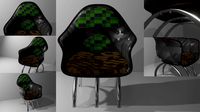
seat version 0.1
...
royalty free 3d model seat version 0.1 for download as blend on turbosquid: 3d models for games, architecture, videos. (1432653)
turbosquid
$12

Chip Version 03
...lty free 3d model chip version 03 for download as c4d and fbx on turbosquid: 3d models for games, architecture, videos. (1241145)
3d_export
$10

magnolia grandiflora mature version
...magnolia grandiflora mature version
3dexport
magnolia grandiflora mature version
3d_export
$8

room assets and voxel version
...room assets and voxel version
3dexport
room assets and voxel version
turbosquid
$35

Zil Civilian version
... model zil civilian version for download as cgf, fbx, and obj on turbosquid: 3d models for games, architecture, videos. (1639420)
1
turbosquid
$69

armchairs(1)(1)
... available on turbo squid, the world's leading provider of digital 3d models for visualization, films, television, and games.
turbosquid
$15
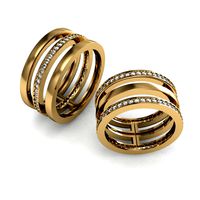
ring 1+1
... available on turbo squid, the world's leading provider of digital 3d models for visualization, films, television, and games.
turbosquid
$10
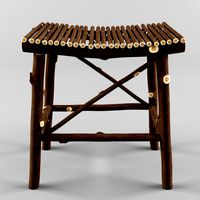
chair(1)(1)
... available on turbo squid, the world's leading provider of digital 3d models for visualization, films, television, and games.
turbosquid
$8

Chair(1)(1)
... available on turbo squid, the world's leading provider of digital 3d models for visualization, films, television, and games.
turbosquid
$2

RING 1(1)
... available on turbo squid, the world's leading provider of digital 3d models for visualization, films, television, and games.
turbosquid
$1

house 1(1)
... available on turbo squid, the world's leading provider of digital 3d models for visualization, films, television, and games.
turbosquid
$1

Table 1(1)
... available on turbo squid, the world's leading provider of digital 3d models for visualization, films, television, and games.
turbosquid
$59

Formula 1(1)
...lty free 3d model formula 1 for download as max, fbx, and obj on turbosquid: 3d models for games, architecture, videos. (1567088)
design_connected
$11

No 1
...no 1
designconnected
sibast no 1 computer generated 3d model. designed by sibast, helge.
turbosquid
$2
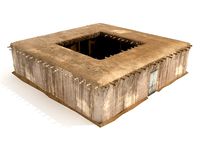
desert house(1)(1)
...3d model desert house(1)(1) for download as 3ds, max, and obj on turbosquid: 3d models for games, architecture, videos. (1055095)
2
design_connected
$11
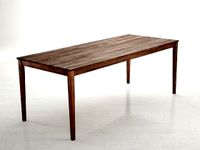
No 2
...no 2
designconnected
sibast no 2 computer generated 3d model. designed by sibast, helge.
turbosquid
$6
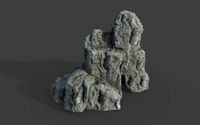
Cliff Rock 2-2
...uid
royalty free 3d model cliff rock 2-2 for download as obj on turbosquid: 3d models for games, architecture, videos. (1619161)
turbosquid
$29

Book variation 2 2
...3d model book variation 2 2 for download as max, obj, and fbx on turbosquid: 3d models for games, architecture, videos. (1366868)
turbosquid
$22

Classic baluster (2) (2)
...assic baluster (2) (2) for download as max, obj, fbx, and stl on turbosquid: 3d models for games, architecture, videos. (1483789)
turbosquid
$99

Smilodon 2 Pose 2
... available on turbo squid, the world's leading provider of digital 3d models for visualization, films, television, and games.
turbosquid
$20
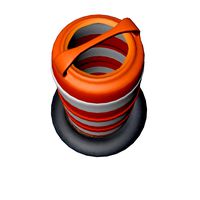
Barrel Barricade 2-2
... available on turbo squid, the world's leading provider of digital 3d models for visualization, films, television, and games.
turbosquid
$6

Wall Trophy (2) (2)
... available on turbo squid, the world's leading provider of digital 3d models for visualization, films, television, and games.
turbosquid
free
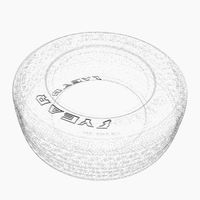
Tire label 2 of 2
... available on turbo squid, the world's leading provider of digital 3d models for visualization, films, television, and games.
3ddd
$1

Кровать, 2 тумбочки, 2 светильника
...кровать, 2 тумбочки, 2 светильника
3ddd
кровать, 2 тумбочки, 2 светильника
нормальное качество
формат 3ds max
без текстур
3ddd
free

Кровать, 2 тумбочки, 2 светильника
...кровать, 2 тумбочки, 2 светильника
3ddd
кровать, 2 тумбочки, 2 светильника
нормальное качество
формат 3ds max
без текстур
